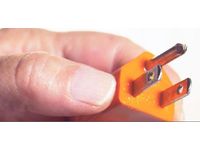The Non-standard Powerline Networking Standard
When is a standard not really standard? When it’s the proposed IEEE P1901 standard for powerline networking, which the IEEE Standards Association’s IEEE P1901 Working Group will once again take under consideration when it meets in San Francisco November 4 through 6.
Unlike the IEEE 802.11n Draft 2.0 standard for wireless networking, the proposed IEEE P1901 standard for powerline networking does not guarantee that products certified as compliant with the IEEE P1901 standard will work together.
When two of the several camps competing to define the 802.11n wireless networking standard merged their proposals, the resulting draft standard guaranteed that all 802.11n products would interoperate. So when two of the three camps (the HomePlug Powerline Alliance and Panasonic) competing to define the IEEE P1901 standard for powerline networking merged their proposals in October 2007, many outside the IEEE assumed interoperability was an essential element. It’s not.
As currently proposed, the standard defines one unified MAC layer, but two different physical layers (one PHY layer based on fast Fourier transform orthogonal frequency-division multiplexing, as advocated by the HomePlug Powerline Alliance, and another PHY layer based on Wavelet OFDM, as proposed by Panasonic). The proposed standard allows manufacturers to build devices that utilize either or both PHY layers; but if they choose one over the other, that device will function only with other IEEE P1901 devices designed to use the same PHY layer.
To be fair, Webster’s defines “standard” merely as “something considered by an authority or by general consent as a basis of comparison; an approved model.” According to that definition, there’s nothing wrong with the proposal that the working group has failed to ratify at its three previous meetings. But it would also be fair to say that consumers equate “standard” with “interoperable,” assuming that as long as they buy a product that adheres to a given standard, it’s going to work with any other product that makes the same claim.
Rob Ranck, president of the HomePlug Powerline Alliance, acknowledges that consumers will need guidance beyond the presence of the phrase “IEEE P1901” on a powerline-networking product’s box. “P1901 devices will need to include some certification labeling with the PHY type,” said Ranck, “to ensure that consumers can tell the difference in the case of devices that don’t support both PHY types.”
But Chano Gomez, vice-president of technology and strategic partnerships at DS2 (a company advocating yet a third technology for a powerline-networking standard, which the IEEE P1901 Working Group has repeatedly voted down) argues that the proposed IEEE P1901 isn’t really a standard at all. In fact, he maintains that both the PHY and MAC layers are incompatible. “The current proposal under vote includes two incompatible specifications for PHY and MAC,” said Gomez, “which in my opinion is the reason why many companies oppose it. This is a truly technical reason to vote against the proposal.”
Get Tom's Hardware's best news and in-depth reviews, straight to your inbox.
Gomez went on to say that “standards bring two benefits for the industry: they ensure that all products work together, which is good for consumers, and they provide certainty to new silicon vendors that want to enter the market. With more vendors, you get more competition and eventually more innovation and lower prices—which is also good for consumers. This two PHY, two MAC proposal achieves none of that.”
Ranck argues that the perfect is the enemy of the good. “Although some have argued against this approach in favor of having complete interoperability,” said Ranck “the reality is that the powerline industry has been fragmented for many years and there is no guarantee that a consensus on interoperability will be reached in the near future. HomePlug’s objective is to support all efforts toward unifying the industry, and we think that taking a step forward in this fashion with IEEE P1901 is a good thing.”
Powerline networking is a good idea—when it works. While few would argue that hardwired Ethernet using Cat5e is the best solution, it’s not always possible to retrofit a home to use it. Wireless Ethernet is another good solution, but radio signals have difficulty penetrating some building materials, and they have limited range. Powerline networking has a place in the market, but the IEEE P1901 Working Group could learn a few things about gaining consumers’ confidence from their colleagues on the IEEE 802.11n Working Group.
-
It's surprising that IEEE does not have mechanisms to avoid this. IEEE should not allow their name to be used for this. If consumers lose faith in the IEEE brand as synonymous of "inter-operable products", IEEE will lose its most important asset.Reply
-
I read a story about P1901's problems back in May. It's funny they have been unable to fix them yet! http://www.edn.com/blog/630000263/post/220026822.htmlReply
